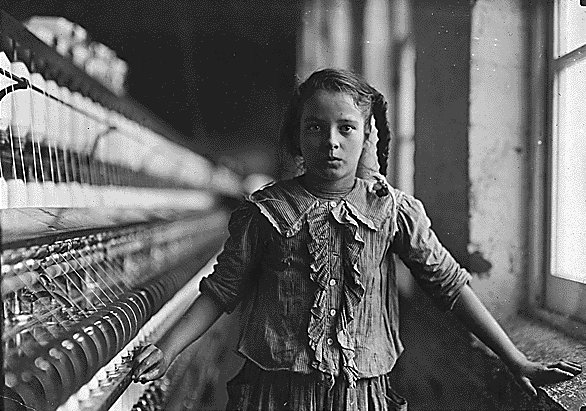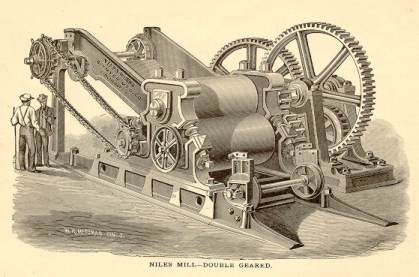West 49
Fia Miami
Lucky Brand Jeans
Nike
Old Navy
Zero
==========================================
West 49: Price$: $30-$100 Labor: Child Labor Wages: 5-10 cents
Fia Miami: Price$: Labor: Child Labor Wages: 6-40 cents 1/hGap: Price$: $20-$100 Labor: child labor Wages: 5-10 cents
Nike: Price$: 20-100 Labor: slavery, child labor, forced labor Wages: 5-12 cents
Old Navy: Price$: 20-40 Labor: Child Labor Wages: 10-20
Zero: Price$: 15-100 Labor: hired workers Wages: $8 an hour
========================================
Working Conditions:
West 49: semi-good heating, poor floors, poor cleanliness, very poor structure.
Fia Miami: very poor workspace, dusty and dry air, hazardous.
Gap: Very poor, rough conditions, cheap building structure, floors covered in filth.
Old Navy: poor heating, weak floors, rusty conditionsNike: Poor, squalid living conditions, filthy
Zero: semi-good, semi-clean, good heating
Union Opportunities:
West 49: Not many are open
Fia Miami: not many are open
Gap: none are open
Nike: none are open
Old Navy: none are open
Zero: many are open
How the co. treats its workers:
West 49: pretty poorly
Fia Miami: pretty poorly
Gap: pretty poorly
Nike: Very poorly
Old Navy: Very poorly
Zero: fairly good
Decent Comparing wages of the CEO and workers:
West 49: wages of the workers: 5-10 cents a day and of the CEO's : 10 million a year
Fia Miami: W.O.W: 6-40 cents a day, CEO's: about 10 million a year
Gap: W.O.W: 5-10 cents a day, CEO: 9 million a year
Nike: 5 million a year (CEO) 5-12 cents a day (workers)
Old Navy: 10-20 cents (Workers) 8 million a year (CEO)
Zero: $3,000 a year (CEO) $1000 a year (Workers)
Benefits of salary paid to celebrities for ads:
West 49: salary: 15-20 an hour
Fia Miami: Salary: 5-10 an hour
Gap: 10-15 an hour
Nike: 13-15 an hour
Old Navy: 10-12 an hour
Zero: 6-20 an hour
Co. ads to wages:
West 49: 40-50 a day
Fia Miami: 30-40 a day
Gap: 20-30 a day
Nike: 40-50 a day
Old Navy: 40-60 a day
Zero: 2-5 an hour
Script
Angel_Tears
Welcome to our Sweatshop Fashion Show! We have a real treat for you today! In just a few moments you will get a chance to see our models displaying some of the hottest fashions from your local mall! This show isn't all about looking good though. Today we will be taking you behind the scenes of your favorite brands. We are going to be looking at something the big clothing companies don't want you to know about: the truth about the conditions under which our clothes are made.So please get comfortable, and listen well because you don't want to miss a moment of our upcoming presentation.
If you take a look at our first model, you may notice she has many different brands of clothes on, very fashionable, very chic.But don't get ahead of yourself there; have you ever thought about behind the scenes of the fashion industry? For instance, notice she is wearing a hat made by Gap.
For many years GAP was infamous for its sweatshop abuses. After more than 10 years of campaigns and actions by students, and concerned citizens, GAP has begun to change its ways. In 2005 it released its second corporate social responsibility report, a document compiling information on their practices with regards to labor and the environment. Gap isn't the only company, those awesome Nike shoes she's wearing?
Think about a child younger than you, working on those shoes for a daily wage of 20 cents a day!Nike has spent many years as the poster child of sweatshops. Pressure and constant campaigning by people all over the world has seen Nike take on a great deal of initiative when it comes to labor rights in recent years. They are far from perfect, but in 2005 Nike set a great example by being the first major retailer to disclose a full list of the factories where their products are produced.
Oh my Gosh! Have you seen her jeans???? Those are really very chic, and the least expensive.
Wal-mart is also part of the sweatshop abuse cycle.The reason Wal-Mart is able to keep their prices so low, is that they pay as little as they can to the people making their products. In 2004, workers making products for Wal-Mart stores in China and Bangladesh were being paid as little as $.17/hr!
And that cute handbag? Made by Le Chateau.....Le Chateau is a publicly traded Canadian company, and yet it refuses to make any information regarding the production of its apparel public! In a recent report by the Ethical Trading Action Group, Le Chateau scored a whopping zero for not telling its customers anything about the conditions in which their trendy clothes are made.
Love the Lake Trail music hoodie; it's such a nice blend with her outfit.Wonder if her school was connected with sweatshop labor! Unfortunately, I don't think she was able to find anything...guarantee, because her school doesn't have a No Sweat policy.....
That awesome wristband with the Zero logo looks sweet! I want one now! Though Zero is a Canadian re-tailor, the workers are paid $8 an hour and are given a pretty good environment in which to work. It's better than most factories around the world.The conditions that children nowadays have a little bit better conditions then what they did back in the times of the Industrial Revolution. You get a little more wages then you did back then but food and clothing today is more expensive than it was back then.....and whole families worked in mills or factories, not just a single child. Today, most families sell there children for money or food, and the children are traded into workhouses.
And now I’d like to call our model up to the stage, all of these major apparel companies have a responsibility to ensure that all the workers who make their products are provided a living wage and decent working conditions, and that their right to organize to improve conditions is respected. Consumers have a right to know where our clothes are made and under what conditions. Companies must publicly disclose information on the name and location of their supply factories, and allow independent monitoring of factory conditions. I am not asking you to stop buying these clothes or reconsider on buying anything from a wide range of toys to food ever again, but I am asking you to support the efforts of garment, toy and shoe workers around the world to improve their wages and working conditions.
Thank you for watching today's show.


Have you ever really thought about where your clothes came from? Do you think these two Gaian's know?
What makes you think so? Now that you know what happens behind the scenes...does buying clothes make you guilty? (not picking on you Chris...)











